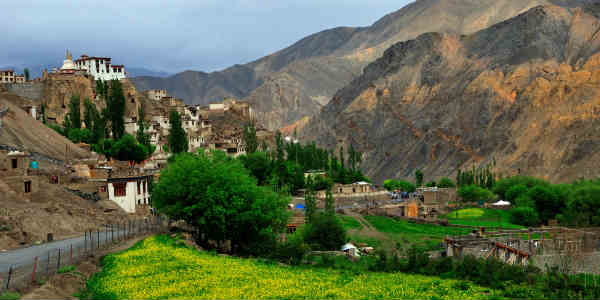
The hills of North India: Jammu and Kashmir, Himachal Pradesh, and Uttarakhand receive rainfall during the wintery months of January, February and March. Even though the month is a transitional period for all these states, maximum rainfall activity in these states is seen in the month of March.
[yuzo_related]
Furthermore, during the months of April, May and June the pre-monsoon rains start setting in over the Western Himalayas. Here, in all the three states, monsoon season is also seen making arrival before the other states of North India.
Generally, in the month of April, Jammu & Kashmir records 97.5 mm of rains, followed by Himachal Pradesh that records 65 mm of rains, while Uttarakhand records the least with 33 mm of rains. This year, the first three months received very poor rains and were deficient by over 60% against the normal average rainfall. Temperatures were also seen above normal by 5-8 degrees.
During the first few days of April, only Jammu & Kashmir recorded some scattered rain activities while the other two have remained dry so far.
Now, since last week we can see a change in the weather conditions over the Western Himalayas. On account of Western Disturbances and induced circulations, extended spells have been witnessed for the past few days. April has brought in good rains. Temperatures have also dropped and are almost below normal.
In the last 24 hours, from 08:30 am on Wednesday, Gulmarg recorded rains to the tune of 7.5 mm, Banihal 14.2 mm, Batote 31.2 mm, Bhaderwah 17 mm, Jammu 5 mm, Katra 4 mm, Kukernag 12.4 mm, Pahalgam 19.4 mm, Srinagar 3.2 mm, Dharamsala 6.4 mm, Hamirpur 27.0 mm, Kullu 9.8 mm, Manali 14.6 mm, Shimla 5.1, Almora 21.0 mm, Dehradun 10.4 mm, Mussorie 7 mm.
However, these rainfall activities are expected to continue till today evening. The weather conditions are likely to ease out by April 13. Thereafter, a fresh Western Disturbance will be seen arriving the Western Himalayas by April 15 which will again bring in change in weather conditions.
Image Credit: hillsofindia
Any information taken from here should be credited to skymetweather.com


